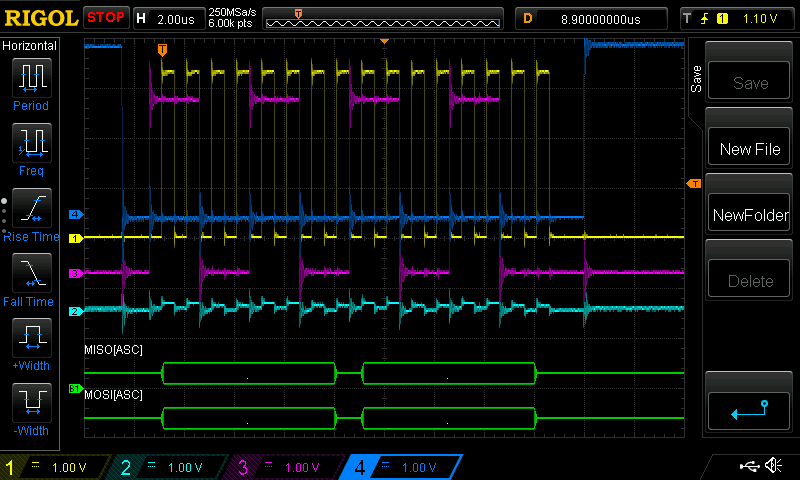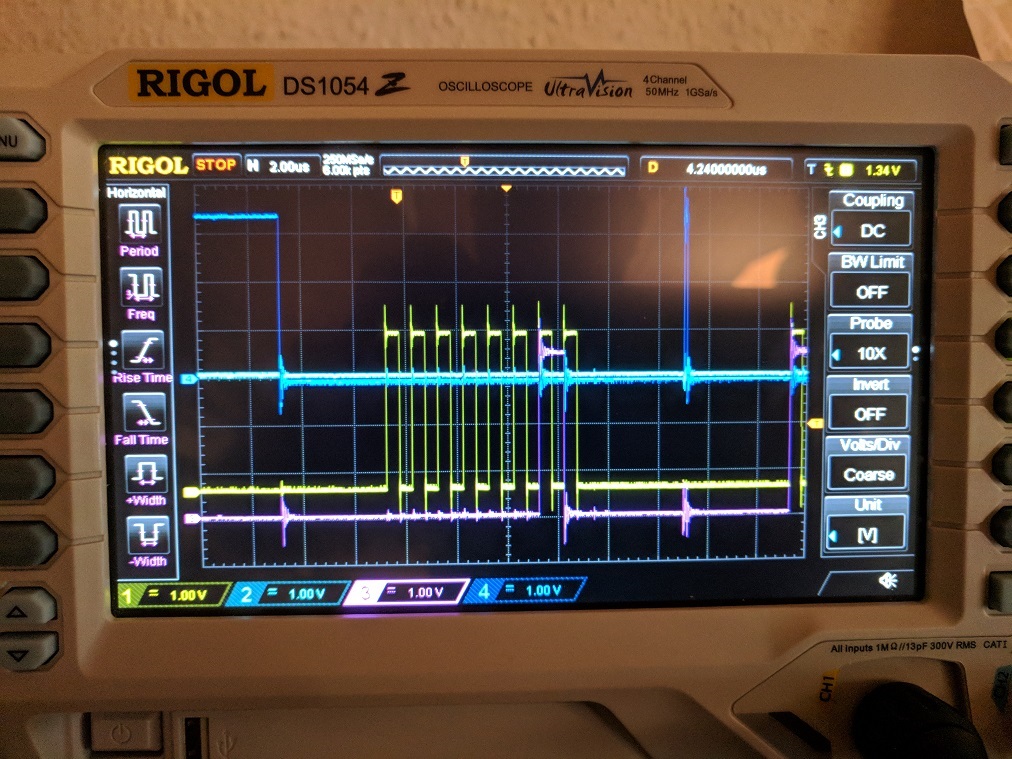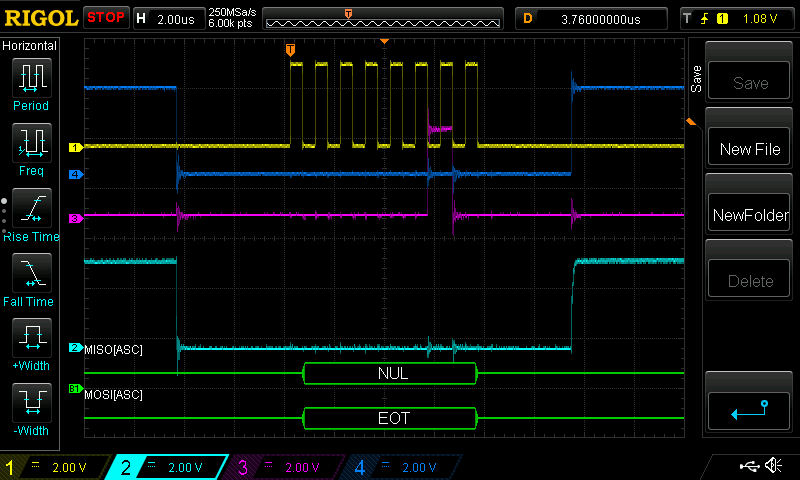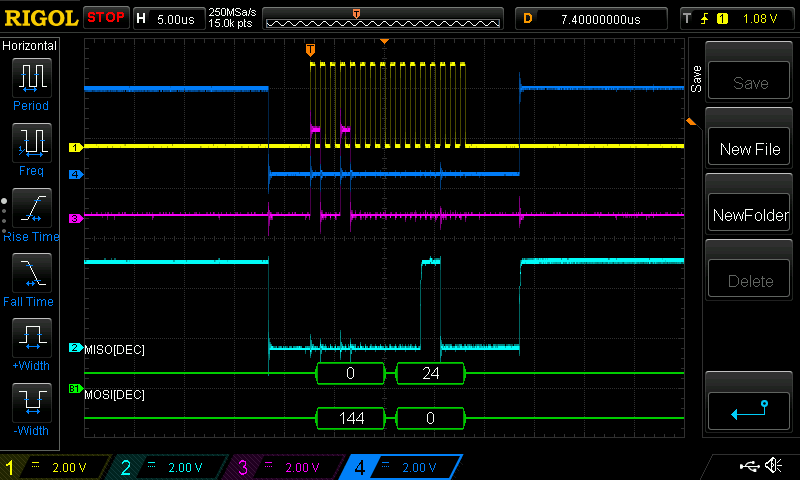I am trying to SPI communicate to DRV8703-Q1 and I use following arduino SPI code:
void testSpi()
{
usleep(10);
// SPI WRITE
vspi->beginTransaction(SPISettings(spiClk, MSBFIRST, SPI_MODE0));
//byte stuff = 0b11001100;
//hspi->transfer(stuff);
digitalWrite(SS1, LOW);
toTransfer = 0b11001100 << 8;
toTransfer |= 0b11001100 ;
vspi->transfer16(toTransfer);
digitalWrite(SS1, HIGH);
vspi->endTransaction();
usleep(10);
}
I dont get any reply from device.
Picture of SPI Communication is attached -
channel1 - yellow : CLK
channel2 - light blue: SS (Slave select)
channel3 - pink: MOSI
channel4 - dark blue: MISO
Wht could be the problem? Any idea how to troubleshoot further?
regards








